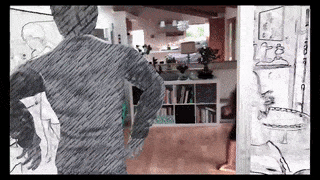Die Besetzer hätten niemanden gefährdet, heißt es in einer Erklärung von FH-Mitarbeitern. Engagement für den Erhalt des öffentlichen Raumes solle nicht kriminalisiert werden. Die Leitung der Fachhochschule soll die Anzeigen gegen die Besetzer der FH zurückziehen. Das forderten am gestrigen … Weiterlesen
Monat: Juli 2017
Shoelace.css: A Back to the Basics CSS Starter Kit
CSS frameworks such as Bootstrap and Semantic UI have become an essential part of web design. They provide the necessary resets, default styles, and components that save us hours and hours of work.
Most CSS frameworks are built using preprocessors such as Less or Sass, which is great, except when folks include the entire library like this:
<!-- Bootstrap 4 - 192KB --> <link rel="stylesheet" href="bootstrap.min.css">
Or this:
<!-- Semantic UI 2.2 - 567KB --> <link rel="stylesheet" href="semantic.min.css">
Note the file sizes for the minified versions. And that doesn’t even include scripts.
There are a couple problems here:
One, you don’t need most of the things frameworks ship with. They weren’t designed for you to use the bundled version, except perhaps for building a really quick prototype.
Two, when you use the bundled version you lose what makes preprocessors so great, such as customizing everything with variables. For example, in Bootstrap 4 you’ll need to update at least 30 styles just to change the primary color globally. Fail!
Of course, the reason most people load everything is because it’s easier. You don’t have to worry about Less, Sass, Stylus, or setting up a build script.
What if you could have the best of both worlds?
Introducing Shoelace.css
I created Shoelace.css to solve this very problem. It’s a highly customizable, pure CSS starter kit that weighs in at only 31KB minified (7.9KB gzipped). You can load it locally or via CDN, yet still customize everything with variables. And it’s completely free.
Shoelace uses a well-supported feature of CSS called Custom Properties. Many people like to call them “CSS variables.” Either way, they’re incredibly useful.
You define custom properties in your stylesheet like this:
:root {
--body-color: #000;
--body-bg-color: #fff;
--link-color: blue;
}
And then use them later on like this:
body {
color: var(--body-color);
background-color: var(--body-bg-color);
}
a {
color: var(--link-color);
}
The nice thing about custom properties is that they cascade, so you can override them as needed. To customize Shoelace, just override a few variables and you’re done. No preprocessing required!
Check out this demo on CodePen to see Shoelace in action. You can change the variables and watch components update right in the browser.
No magic. Just CSS.
What’s in the Box
I like to think of Shoelace as a CSS reset sprinkled with helpful components. It doesn’t do quite as much as a full blown framework, but that’s intentional. It ships with the essentials because that’s usually all you really need. Of course, you can extend Shoelace with your own components as needed.
Here’s what you get out of the box:
- CSS Reset
- Default Content Styles
- Alerts
- Badges
- Buttons
- Forms
- Loaders
- Tabs
- Tables
- Text Utilities
- Float Utilities
- Sizing Utilities
- Spacing Utilities
One thing that Shoelace doesn’t ship with is a grid system. This is also intentional, as support for the CSS Grid has improved significantly and you really don’t need one anymore. If you haven’t explored the CSS Grid yet, Rachel Andrew has created Grid By Example to bring you up to speed.
If you have an obligation to support older browsers, you’re encouraged to include your favorite grid system on top of Shoelace.
The Future of CSS frameworks
I don’t like to call Shoelace a framework. It’s more of a “CSS starter kit” that lets you build things without the overhead preprocessors require. The fact that you can <link> to it with one line and immediately have access to a fully customizable CSS boilerplate is incredible.
I think Shoelace is the future of CSS frameworks. Preprocessors still have a place in the world of web design, and they will at least until color modifiers and custom media queries land, but CSS is catching up fast — and Shoelace is taking full advantage of it.
Shoelace was created by @claviska. You can learn more about this project by visiting shoelace.style.
The post Shoelace.css: A Back to the Basics CSS Starter Kit appeared first on David Walsh Blog.
AR-Ha: Take on me als AR-App
 Die Chicagoer AR-EntwicklerInnen von Trixi Studios ist mit diesem ARKit-Machbarkeitsmode eine Seltenheit gelungen: Augmented Reality, die nicht gar so grob und überflüssig wirkt, wie die meisten anderen AR-Spielereien.
Die Chicagoer AR-EntwicklerInnen von Trixi Studios ist mit diesem ARKit-Machbarkeitsmode eine Seltenheit gelungen: Augmented Reality, die nicht gar so grob und überflüssig wirkt, wie die meisten anderen AR-Spielereien.
Digitalcourage: Klage gegen den Staatstrojaner
Digitalcourage wird gegen den Staatstrojaner eine Verfassungsbeschwerde beim Bundesverfassungsgericht in Karlsruhe einreichen. Digitalcourage kritisiert die Folgen der Staatstrojaner für Grundrechte und IT-Sicherheit. Alle Menschen, die digital kommunizieren, sind von diesem Gesetz betroffen und können die Verfassungsbeschwerde unterzeichnen.
Das halte ich für unterstützenswert! Unterschreiben bzw. euch anschließen könnt ihr natürlich auch.
Mitmachen: Hilf mit die Spendenziele zu erreichen!
Bierabsatz im 1. Halbjahr 2017 um 2,1 % gesunken
Der Bierabsatz ist im ersten Halbjahr 2017 gegenüber dem entsprechenden Vorjahreszeitraum um 2,1 % beziehungsweise 1,0 Millionen Hektoliter gesunken. Wie das Statistische Bundesamt (Destatis) weiter mitteilt, haben die in Deutschland ansässigen Brauereien und Bierlager somit im ersten Halbjahr 2017 rund 46,8 Millionen Hektoliter Bier abgesetzt. In den Zahlen sind alkoholfreie Biere und Malztrunk sowie das aus Ländern außerhalb der Europäischen Union eingeführte Bier nicht enthalten.
